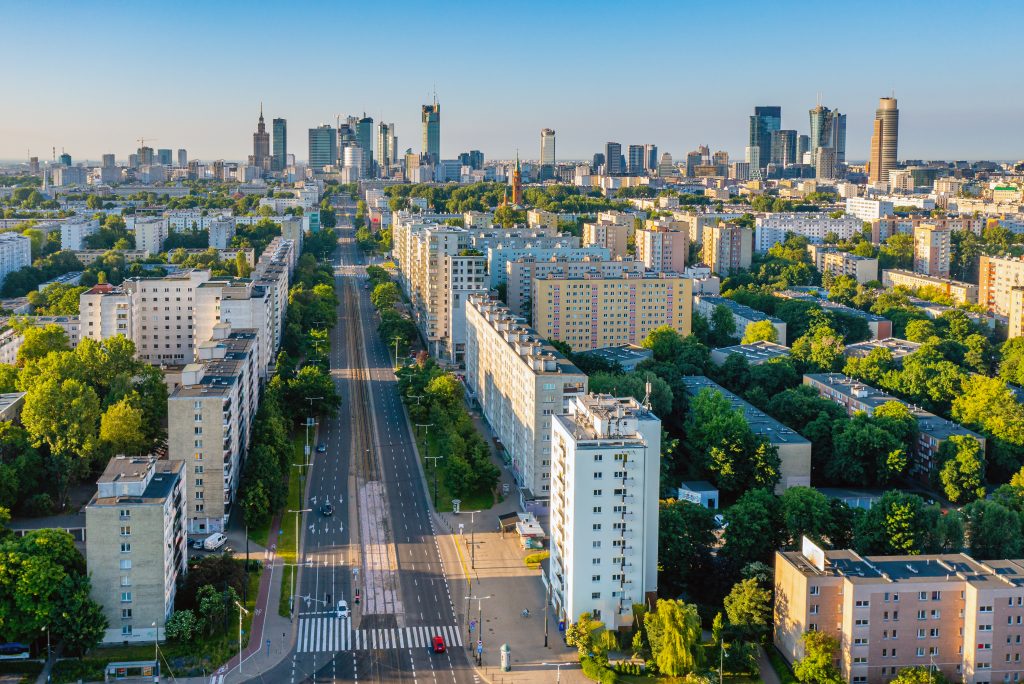On October 20th, we celebrate International Landscape Protection Day, established by the Council of Europe at the initiative of Poland. This date was chosen to commemorate the signing of the European Landscape Convention in Florence in 2000. The General Directorate for Environmental Protection proposed establishing this day because, then and now, its goal is to raise public awareness of the value of landscape, its impact on quality of life, and the need for its protection.
Landscape is not just beautiful views. It is the space in which daily life unfolds, and also a system that allows cities and villages to survive extreme weather events such as drought. It is a place of work, relaxation, and contact with nature. It is a space where nature, culture, and economy meet. A properly planned landscape helps retain water, cool spaces, and support local ecosystems, which is becoming crucial in the face of climate change.
This year’s theme: “Symbiosis – Nature and City in One Landscape!” draws attention to the need to seek harmony between the natural and urban environments. It is an invitation to think of cities not as opposed to nature, but as part of it.
Nature and the City – Two Parts of One
Contemporary cities are increasingly grappling with problems resulting from landscape transformations – the concreting of spaces, the loss of greenery, reduced water retention, and rising temperatures. Nature, once a natural part of home spaces, has been relegated to the margins. Yet, it plays a key role in shaping residents’ quality of life and increasing cities’ resilience to climate change.
The theme of this year’s celebrations emphasizes that the natural and urban landscapes can and should form a single, cohesive whole. Integrating nature with the city is also a way to increase water retention. Ponds, parks, urban forests, rain gardens, green spaces, roofs, facades, and walls are not only decorative elements of shared spaces but also infrastructure that supports water storage, air purification, heat mitigation, and mitigation of the urban heat island phenomenon.
Contemporary urban planning increasingly utilizes solutions designed to counteract the effects of drought and climate change. This approach assumes that nature is not an obstacle to urban development; on the contrary, it should be part of modern spatial planning. Thanks to nature, our cities are more drought-resistant, and residents have more places to enjoy their free time.
Retention City – Water as a Landscape Element
In the context of the “Stop Drought! Start Retention!” project, this year’s theme takes on particular significance. Water is a key element of the landscape – both natural and urban. The way we retain, use, and protect it determines the health of entire ecosystems and the resilience of cities to climate change.
Cities that for decades strived to drain water to the sewer system as quickly as possible are now learning to retain it where it falls – through retention reservoirs, rain gardens, green roofs, and permeable surfaces. Such measures support retention, help counteract the effects of drought, and reduce the risk of flash floods.
Blue-green infrastructure creates a landscape that is not only aesthetically pleasing but also functional. It enables natural water circulation, improves the microclimate, and increases the city’s resilience to extreme weather events.
Sustainable Planning – A Response to Challenges
Polish landscapes – both urban and rural – face many challenges today. These include the loss of green spaces to development, the fragmentation of ecological corridors (i.e., the loss of connectivity between habitats, primarily due to road construction), and low awareness of the importance of landscape in spatial planning.
In recent years, there has been increasing discussion of the need for sustainable planning that takes into account not only economic needs but also environmental and social ones. Cities should strive to ensure that each new fragment of space supports natural processes – species migration, air retention and filtration – to make life easier and more enjoyable for residents. This is also an educational challenge – we are learning to view the landscape holistically and recognize not only its visual value but also the functional one.
Landscape Protection – Important Year-Round
Landscape is a common good. It is a space we co-create and for which we have a shared responsibility. Conscious landscape management – especially in cities – is an investment in the future: in resilience to climate change, the health of residents, and the preservation of the identity of a place.
International Landscape Protection Day is a good opportunity to consider how our daily decisions impact the spaces around us. When designing a street, square, or plot, do we remember about nature? Is there still room in our cityscapes for water, trees, birds… and people?
The slogan “Nature and City in One Landscape!” reminds us that only by acting in a spirit of symbiosis can we create spaces where nature and humanity do not compete, but coexist. Landscape is not just a backdrop – it is the living stage on which our lives unfold.
We encourage you to read the brochure “How to Retain Water in Single-Family Homes and Public Spaces”, which demonstrates practically how to retain water both in single-family homes and in urban public spaces. It is a perfect complement to the ideas presented in the article – it shows that each of us can contribute to building a drought-resistant landscape in which nature and the city coexist in harmony.

 PL
PL

